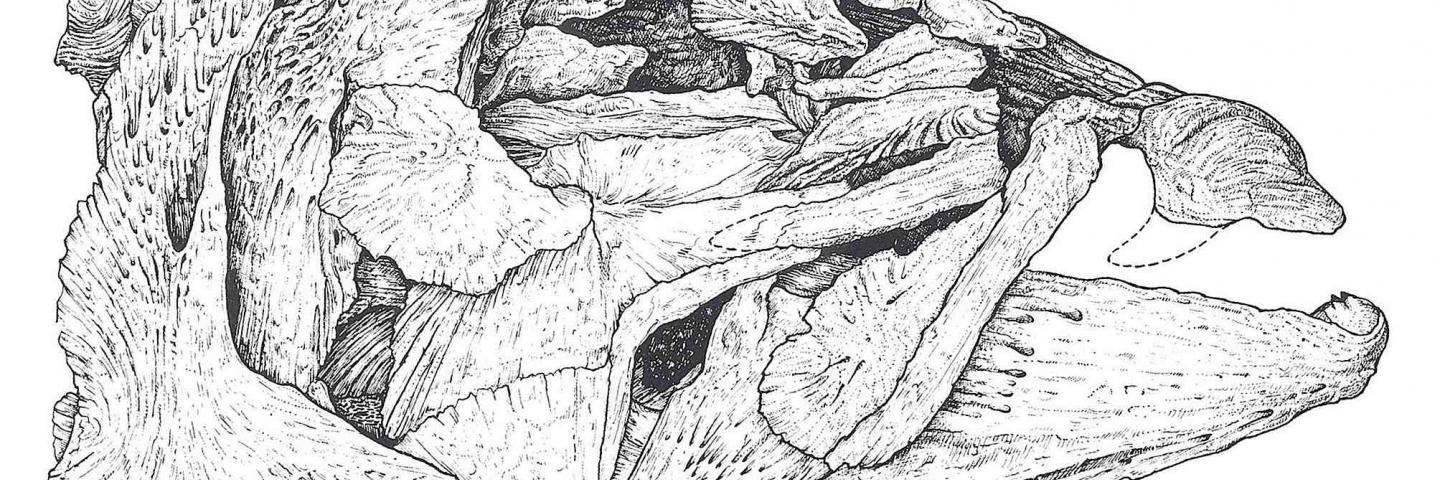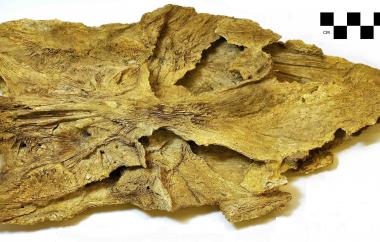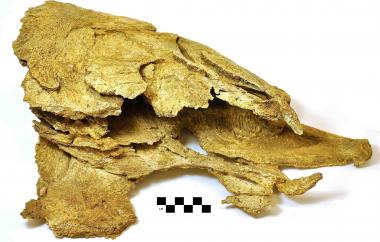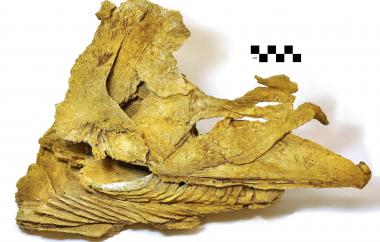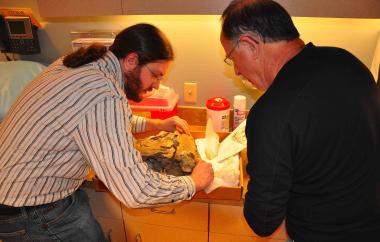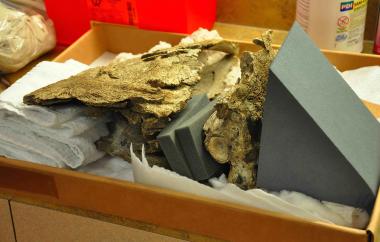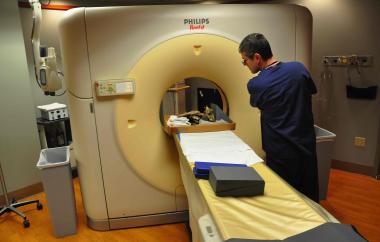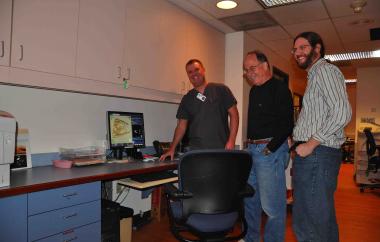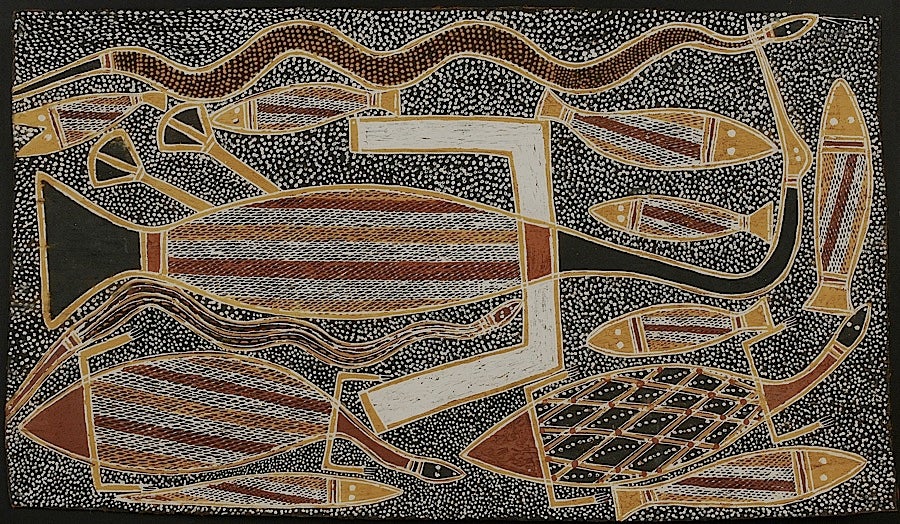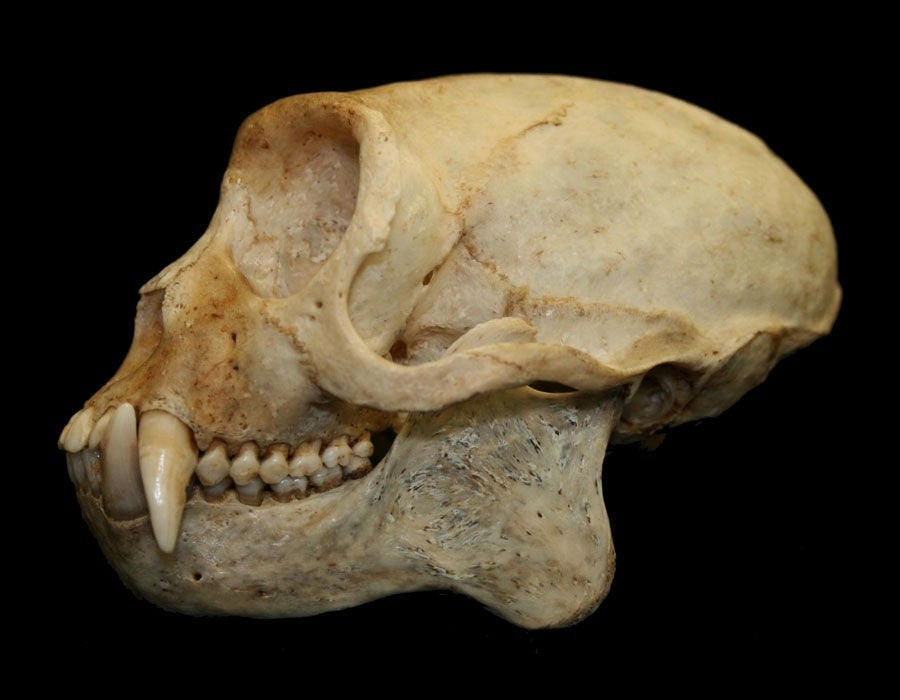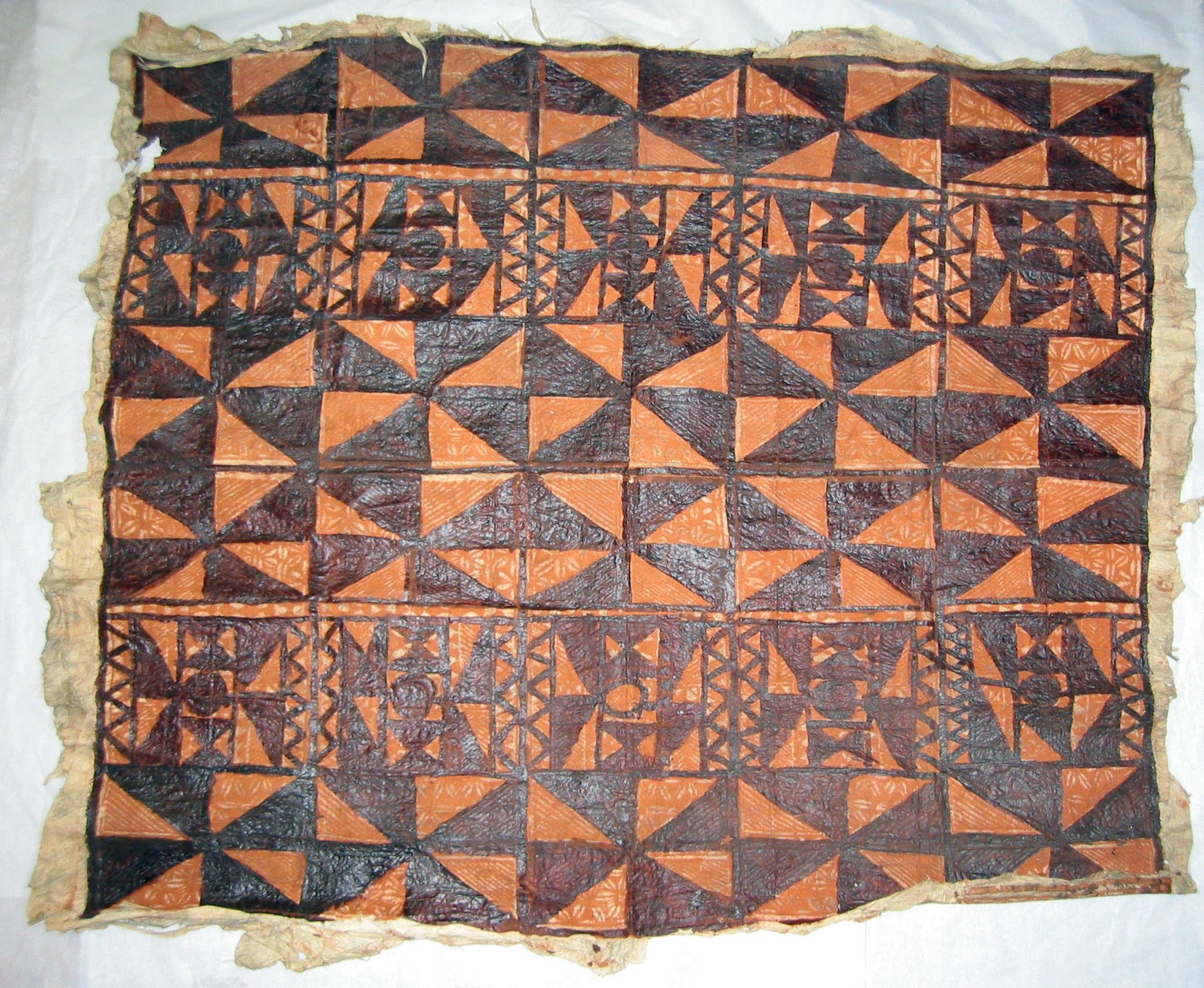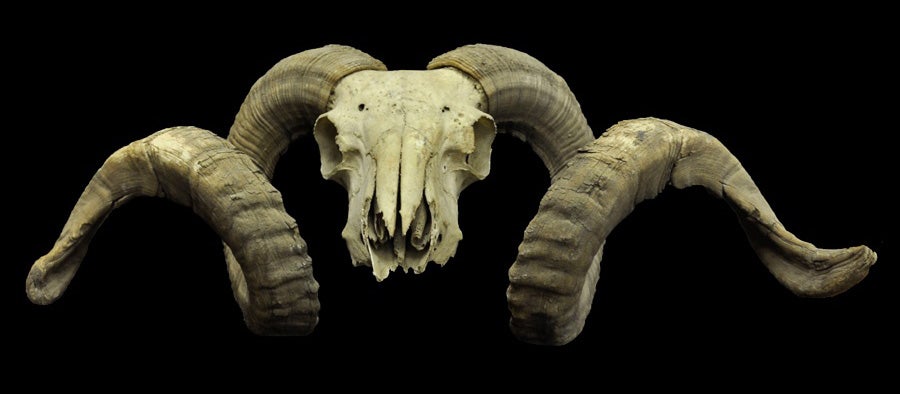The spike-toothed salmon of the Miocene to Pliocene (13 to 4 million years ago) of the Pacific Northwest, known as Oncorhynchus (Smilodonichthys) rastrosus to paleontologists, was exceptionally large for a salmon, measuring over 2 meters (6.5 feet) long! It is named for the large canine-like teeth in its upper jaw, presumably used for competition among males during spawning season, much like the hook that forms on modern male spawning sockeye salmon. Cavender and Miller (1972) described “Smilo” from four localities: The type fossil featured here is from near the town of Madras in Jefferson County, Oregon; other Oregon specimens have been found near Worden in Klamath County. California specimens are known from Pinole, Contra Costa County, and Turlock Lake in Stanislaus County. Except Pinole, which lies on the shores of San Francisco Bay, all these sites are located inland, suggesting that Smilo swam up freshwater courses to spawn, just like its closest living relative, the sockeye. Imagine a six to seven-foot sockeye salmon jumping up a waterfall or coming to its end in a calm mountain pool. Current research at the UO Museum of Natural and Cultural History, by Edward Davis and Brian Sidlauskas (OSU Dept. of Fisheries and Wildlife), seeks to understand the evolutionary differences between Smilo and modern sockeye.
The skull of the type specimen is preserved in two main pieces, which were scanned by Oregon Imaging Centers in collaboration with the Museum of Natural and Cultural History. The top of the skull (braincase) was preserved separately from the bones of the face and jaw. The two pieces of the skull were placed in anatomical position for the scan (as seen in the photos), so the 3D rotations show the two pieces together.
Images © UO Museum of Natural and Cultural History. Production of this gallery was generously supported by The Ford Family Foundation.
Further Reading:
Cavender, T.M., and Miller, R.R.
1972 Smilodonichthys rastrosus: A new Pliocene salmonid fish from western United States. Museum of Natural History, University of Oregon, Bulletin 18:1-44.
Stearley, R. F. and Smith, G. R.
1993 Phylogeny of the Pacific trouts and salmons Oncorhynchus and genera of the family Salmonidae. Transactions of the American Fisheries Society 122:1-33.
Spike-toothed salmon braincase seen from underneath
Oncorhynchus (Smilodonichthys) rastrosus
Lower portion of spike-toothed salmon skull, seen from above
Oncorhynchus (Smilodonichthys) rastrosus
Lower portion of spike-toothed salmon skull, seen from right side
Oncorhynchus (Smilodonichthys) rastrosus
Spike-toothed salmon skull and tooth drawing
Oncorhynchus (Smilodonichthys) rastrosus
Spike-toothed salmon CT Scan
Brian Sidlauskas, Ichthyologist from OSU's Department of Fisheries and Wildlife, and Lee Michaels, recently retired from Oregon Images Centers and MNCH volunteer, preparing the fossil.
Spike-toothed salmon CT Scan
The prepared fossil, ready for the scanner.
Spike-toothed salmon CT Scan
Nathan Sumner, CT Technologist with Oregon Imaging Centers, scanning the fossil.
Spike-toothed salmon CT Scan
Pictured from left to right are Deric Hert, CT Dept. Manager for OIC, Lee Michaels, recently retired from OIC and MNCH volunteer, and Brian Sidlauskas, Ichthyologist from OSU, checking the results of the scan.
